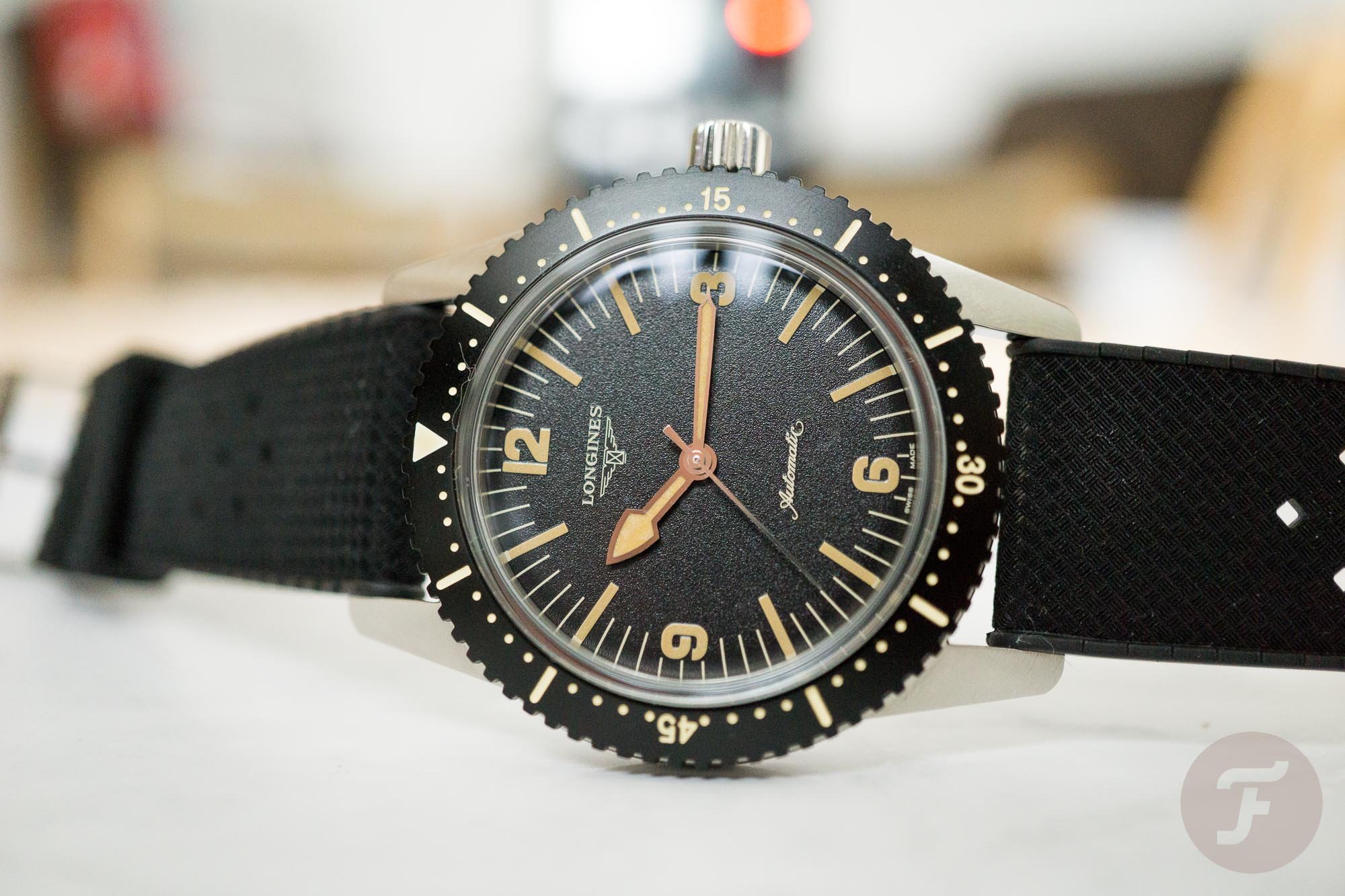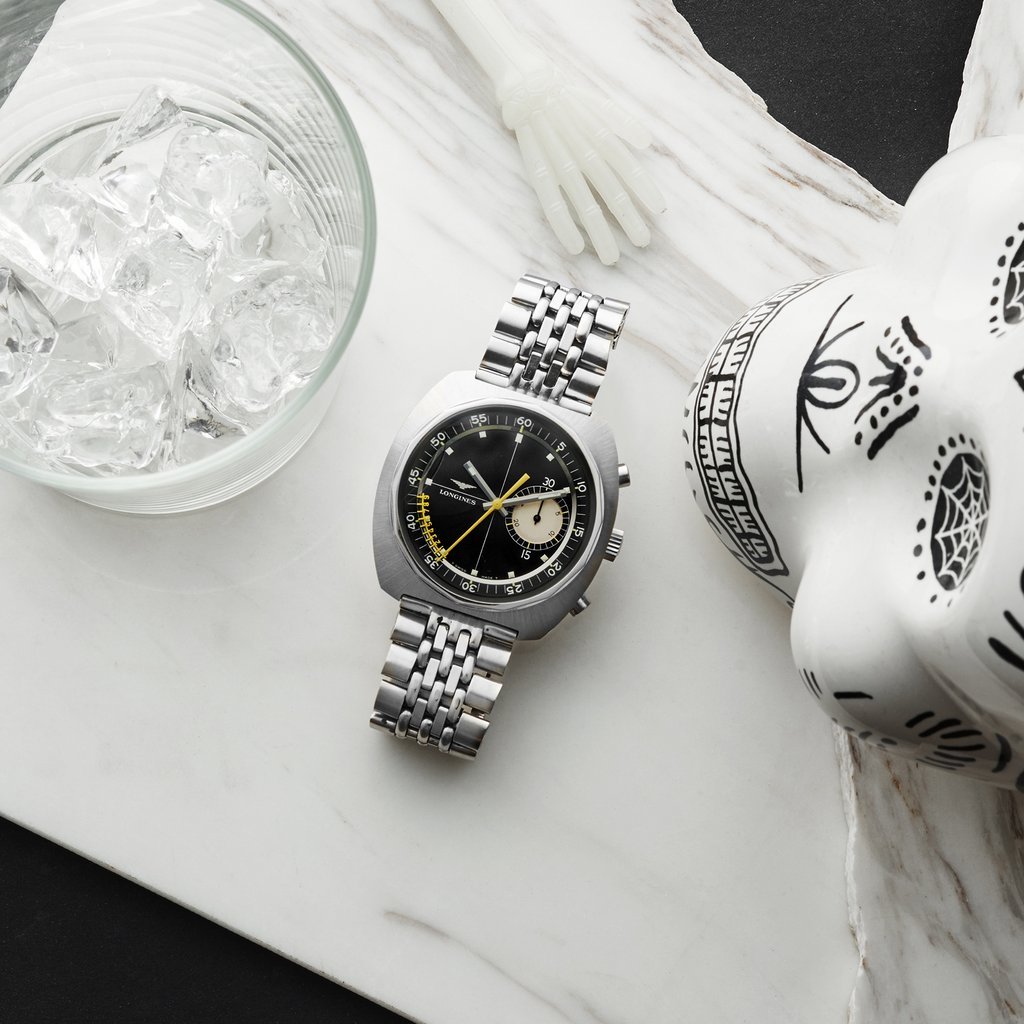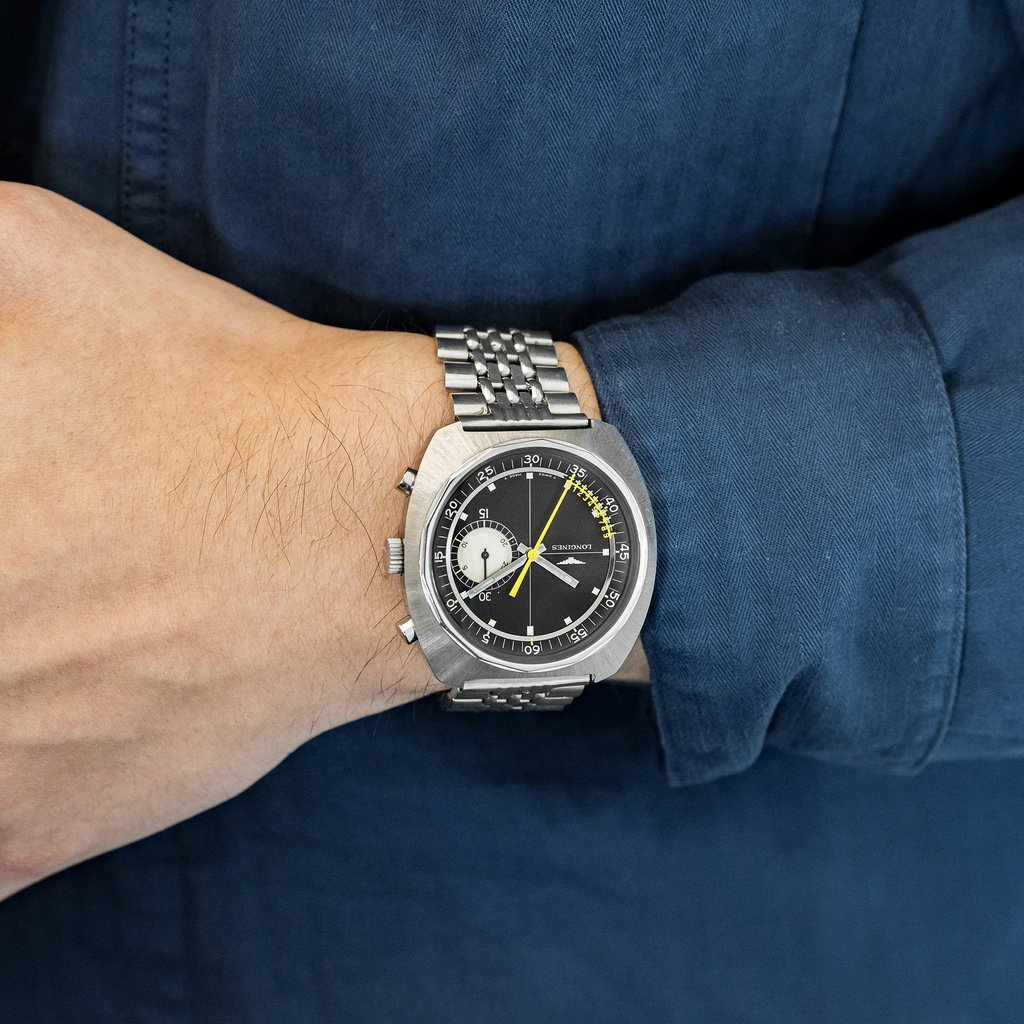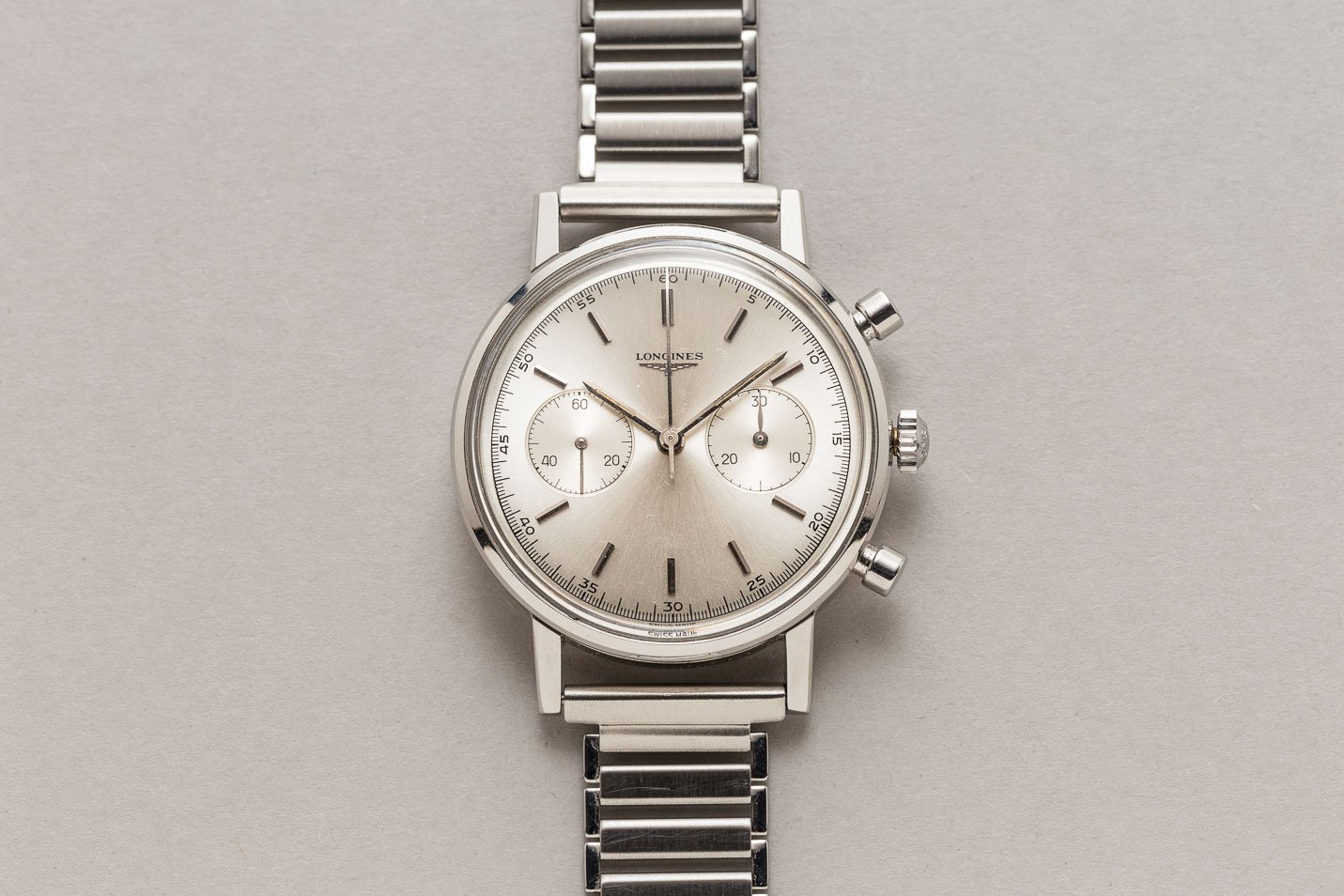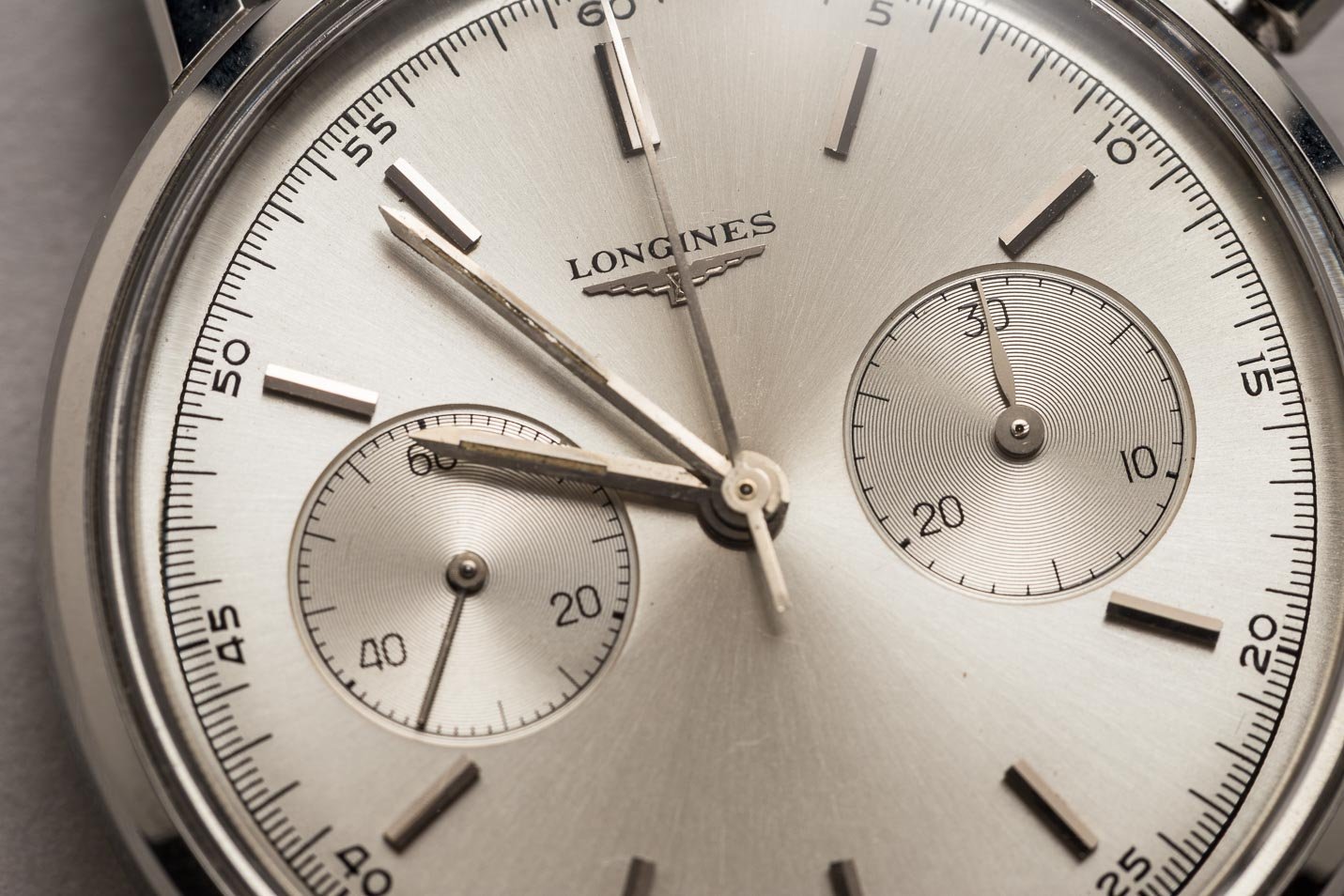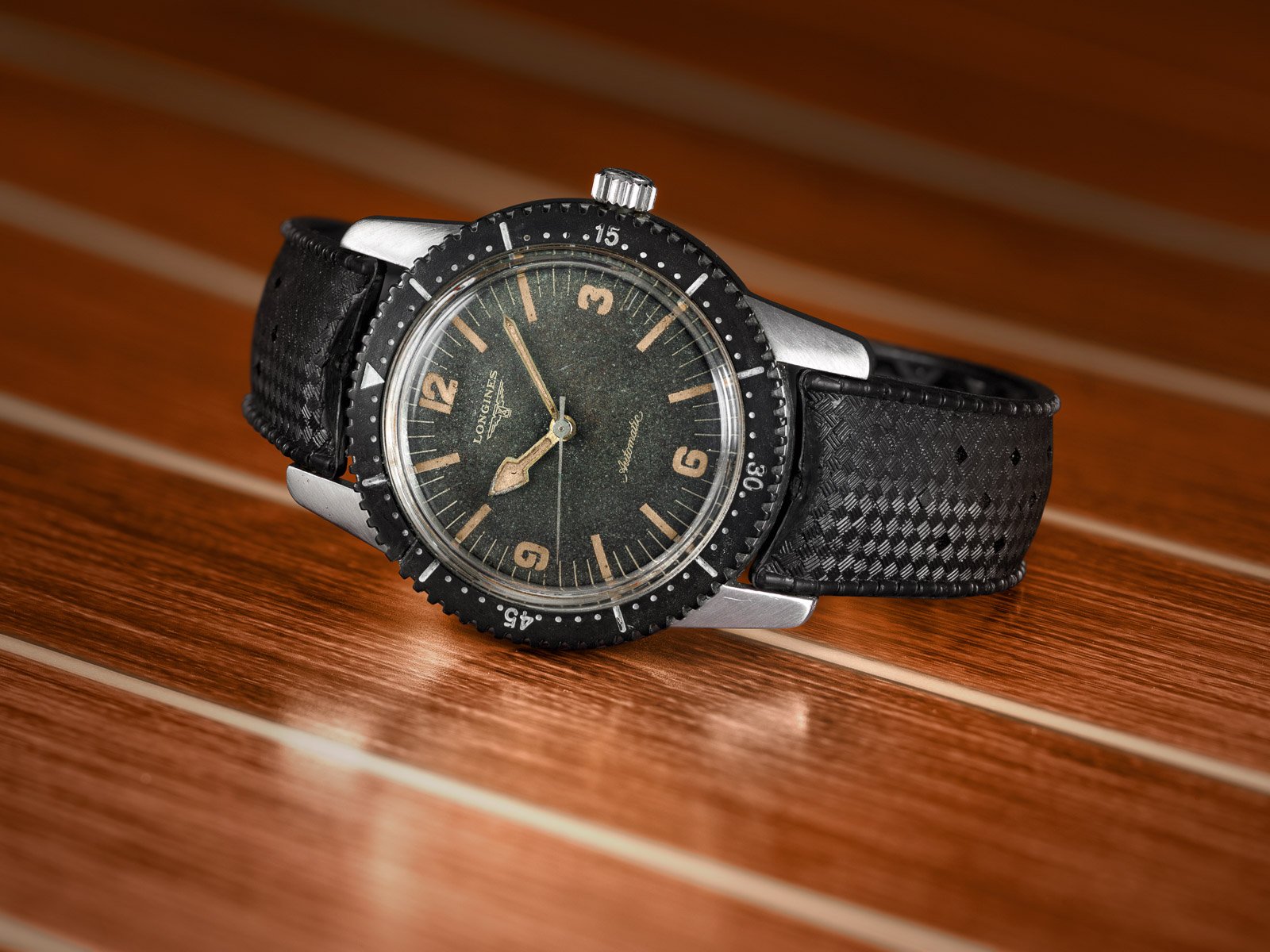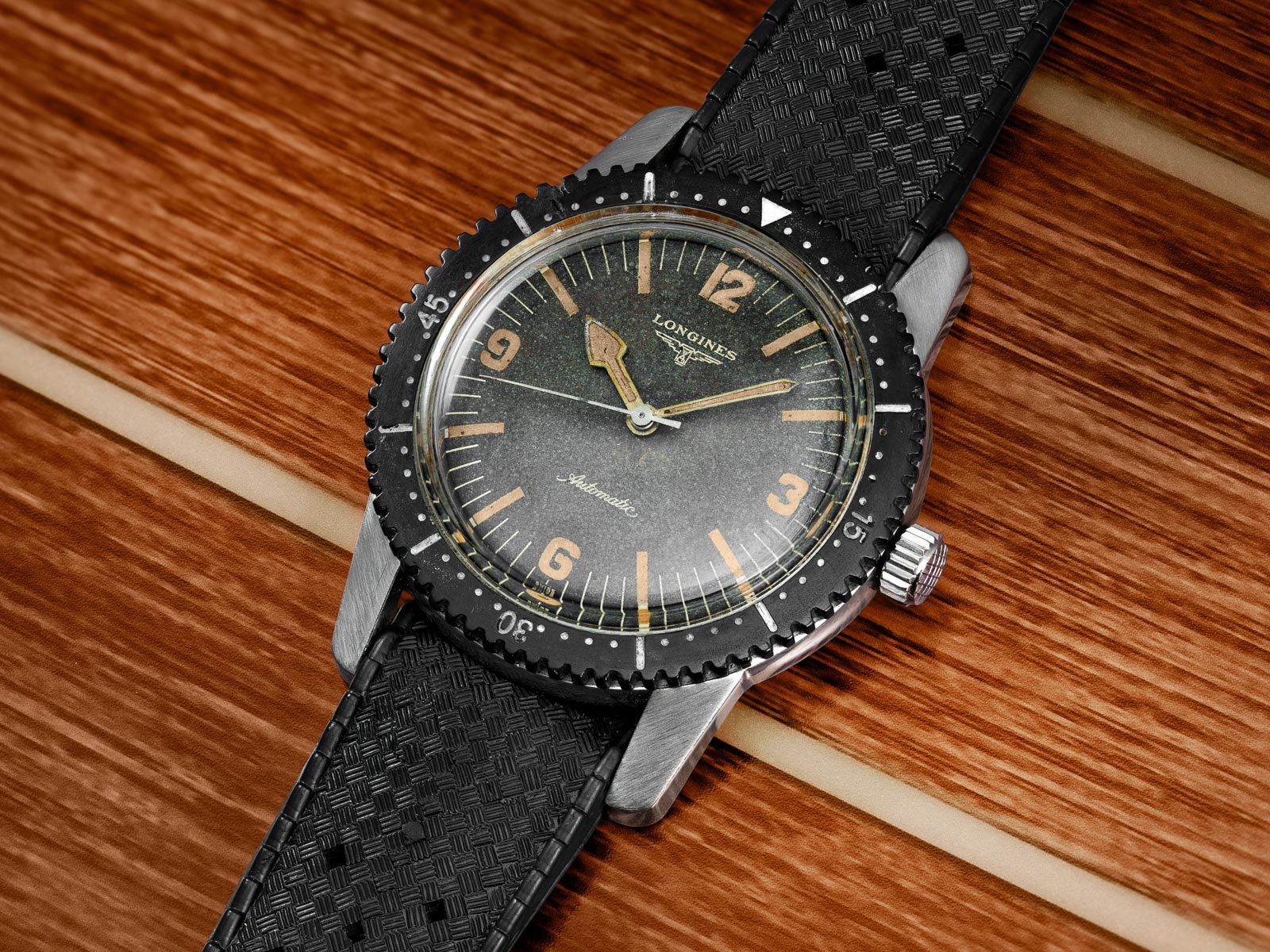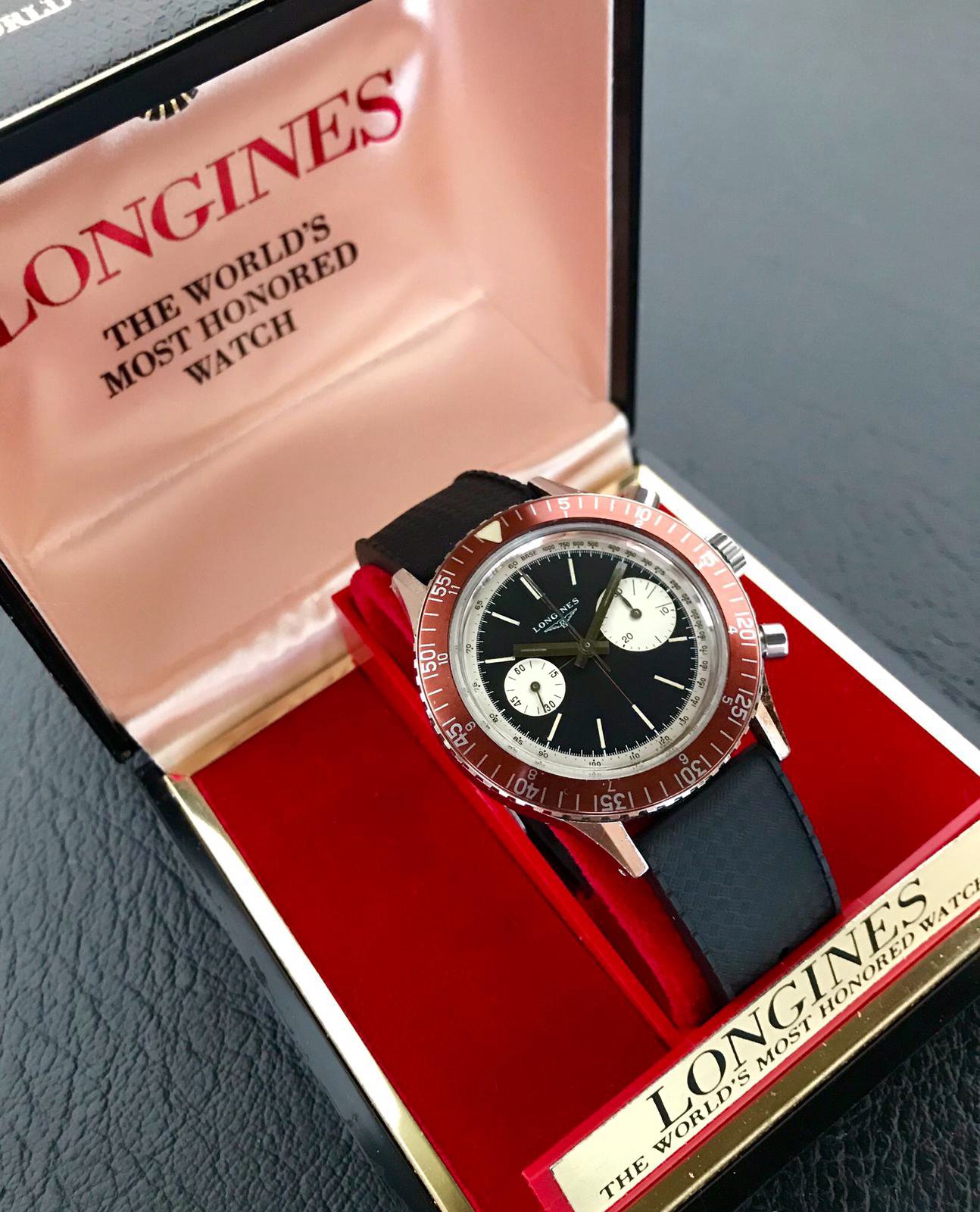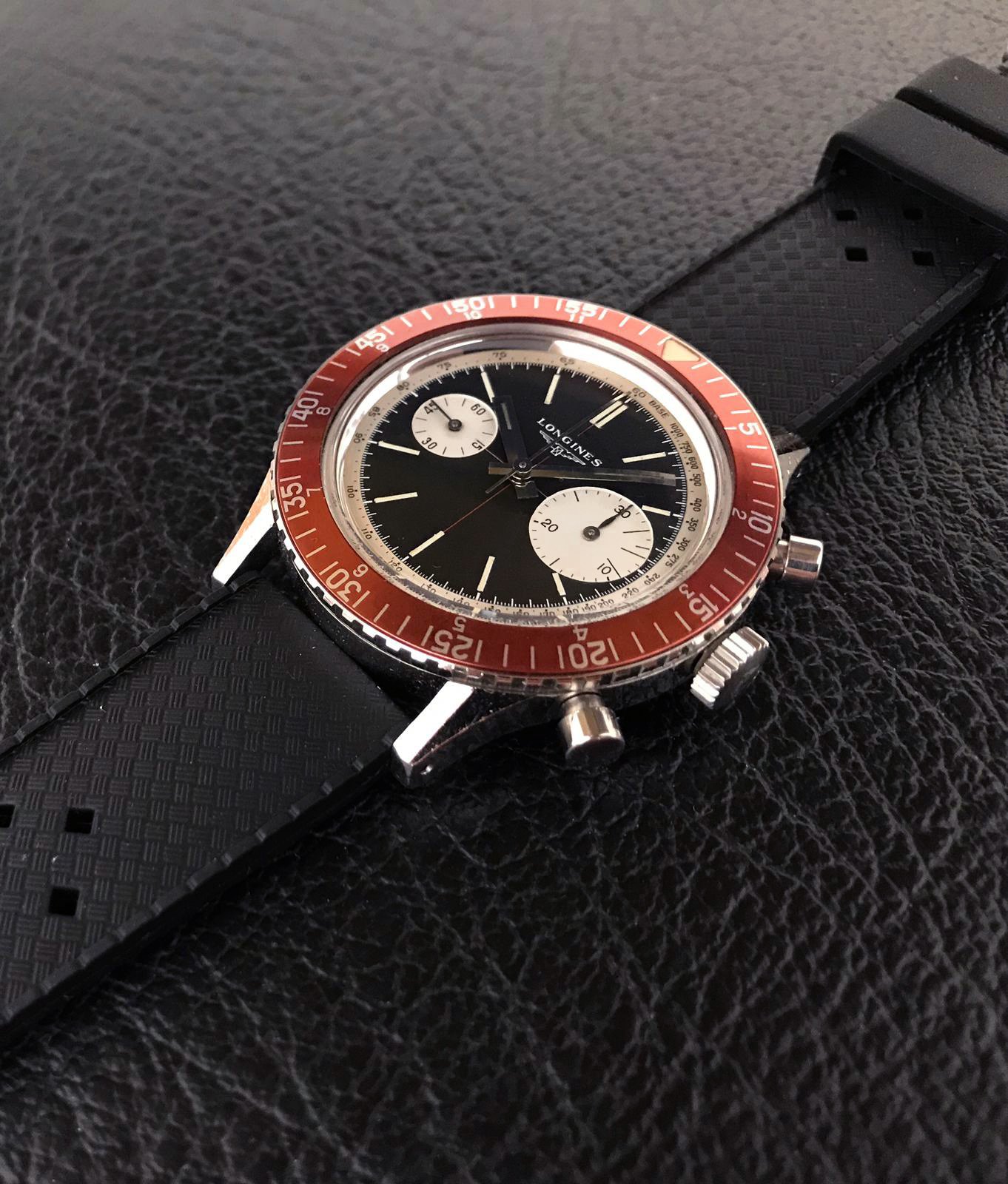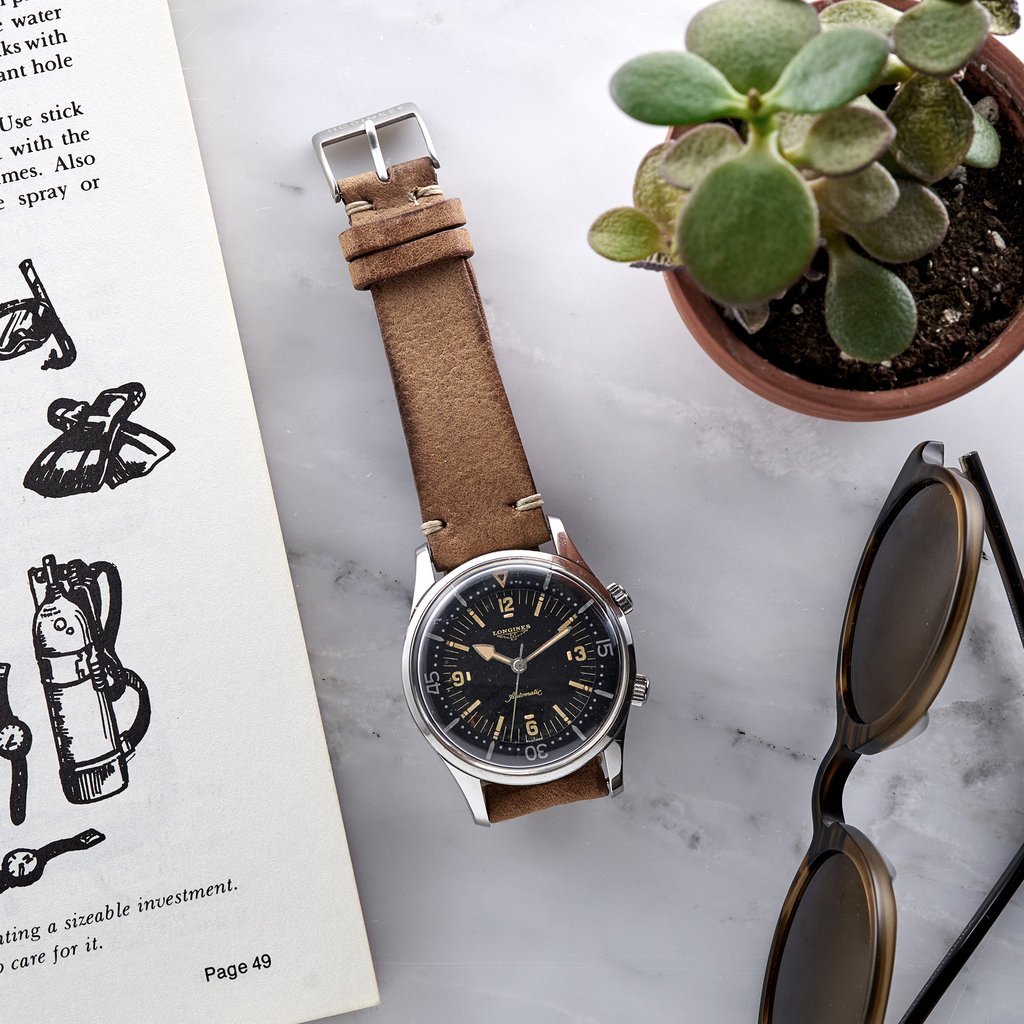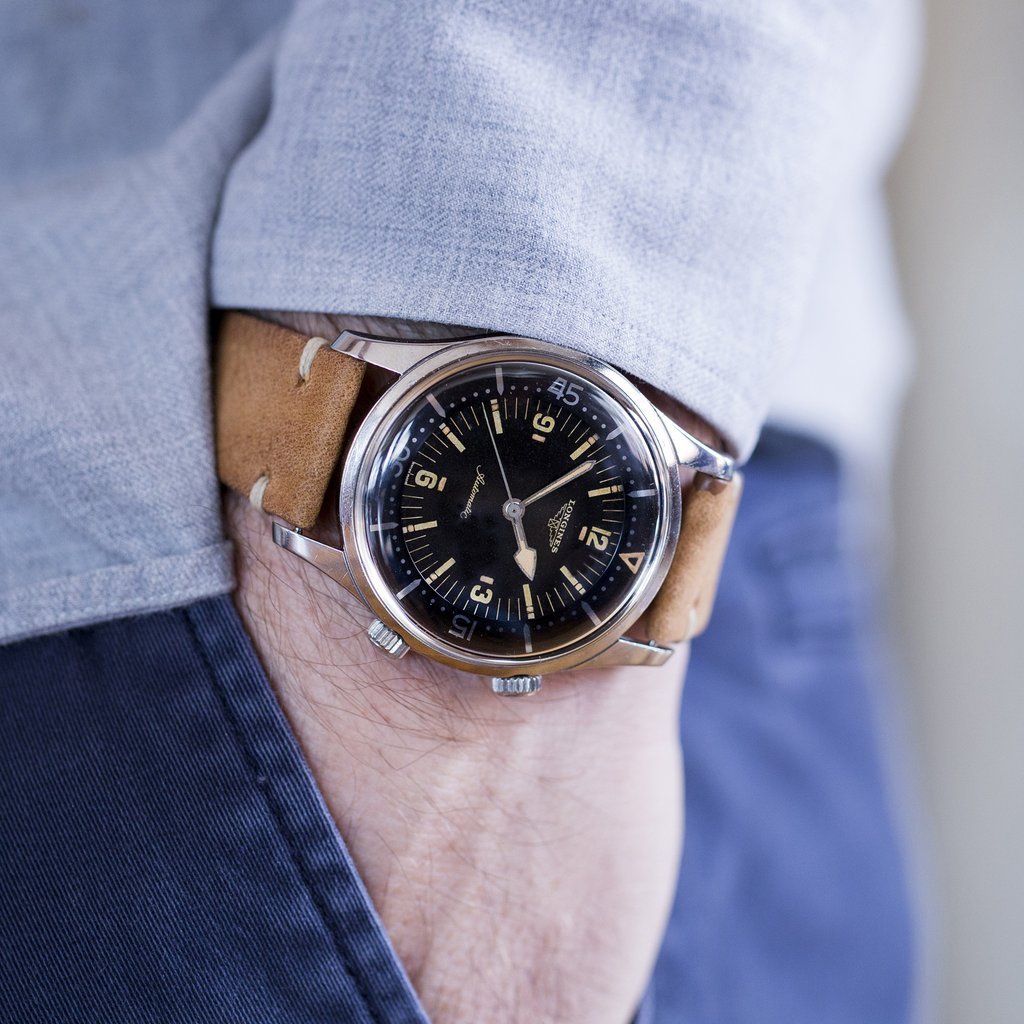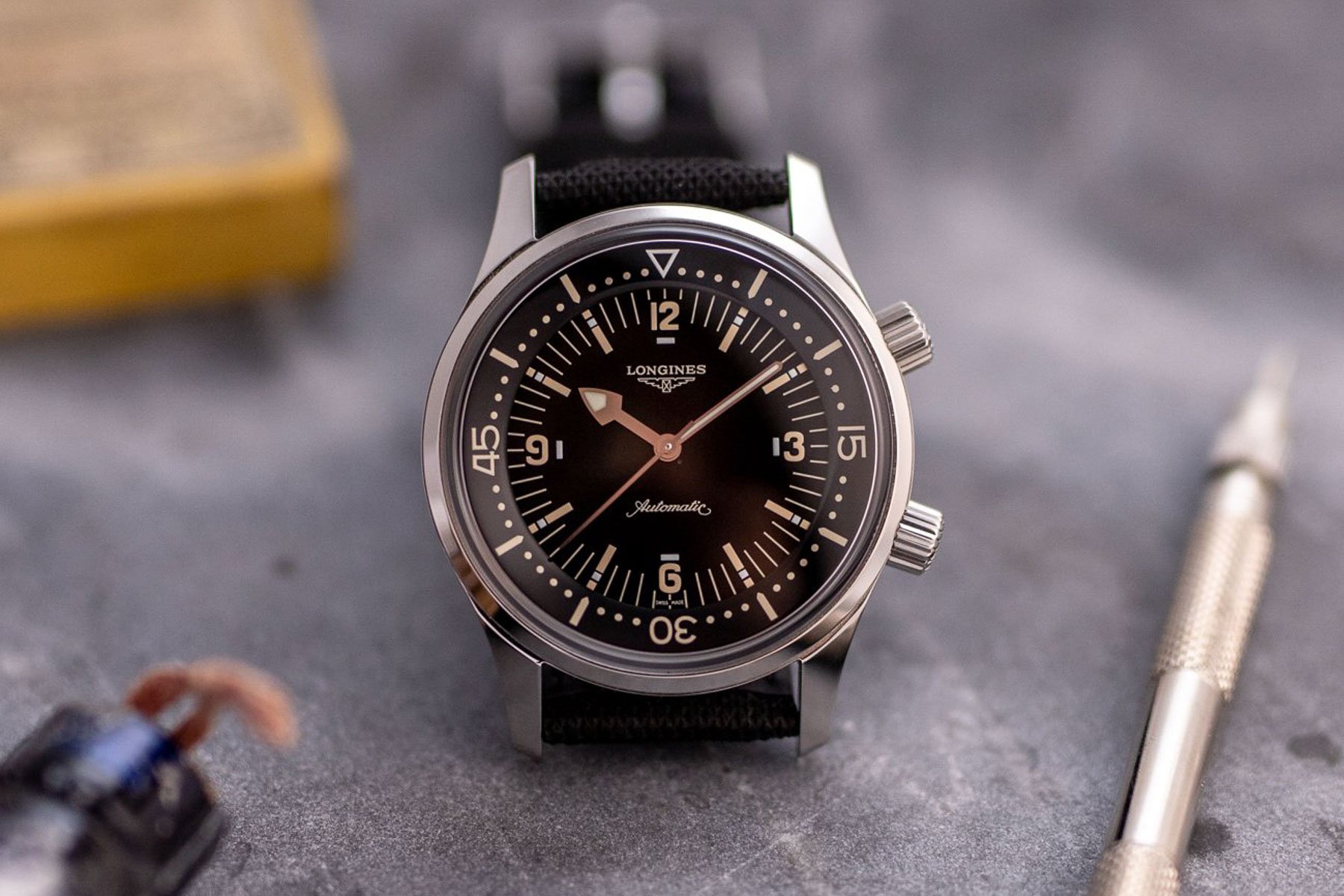Buying Guide: The Best Longines Watches From The 1960s
We like to talk about vintage watches a lot within the Fratello team. While the daily routine is largely focused on the most recent developments in the world of watches, the most fun for many of us lies in the world of vintage watches. It’s a world full of history, remarkable watches, incredible stories, and quirky details. It inspired us to come up with a series of articles focusing on the best watches per decade from a select group of brands. Some of them priceless, some of them still affordable. In this installment, we will take a look at the best Longines watches from the 1960s.
In the 1960s, we witnessed developments that challenged the status quo of watch design forever. While the 1950s introduced the sports watches next to the dressier timepieces people were used to, the 1960s took that trope to the extreme. The sheer amount of watches that pushed the visual boundaries of what was known and accepted was enormous. On top of that, we also saw great technical developments with the race to produce the first automatic chronograph as the most significant of the decade.
Longines in the 1960s
Longines is one of those brands that we can’t leave out of a list of prominent brands from the 20th century. With roots dating all the way back to Saint-Imier in 1832, the brand is well-loved for its vintage timepieces. Especially its iconic military and pilot’s timepieces and its iconic chronographs from the 1930s, 1940s, and 1950s are highly praised amongst collectors. Pieces powered by the iconic 13ZN chronograph movement introduced in 1936 are beloved collector’s pieces and often command a premium. It’s a movement that paved the way for the 30CH chronograph movement that we will find powering some of the watches in this list.
But the 1960s also saw Longines explore different types of watches successfully. Up until that point, the brand was mostly known for its elegant dress watches and iconic chronographs. With the rising popularity of diving, the brand explored new territory in the late 50s by introducing its own take on diving watches. It resulted in some pieces from the 1960s that have become industry classics. It’s great to see how in the 1960s, Longines also transformed into a brand that offered great variety in both types of watches and the designs for them. It makes exploring the world of Longines great fun. Let’s take a look at five of the best from the brand from the 1960s.
The entry-point —Longines Nonius Flyback Chronograph Ref. 8225-1
We’ll start the list with a funky chronograph that fits the character of some of the extravagant shapes and colors that were used during the late 1960s. But it’s more than looks with the Nonius because it was an attempt from Longines to create a more accurate chronograph. The first Longines Nonius was introduced in 1968 and featured a 43mm stainless steel case that is 11mm thick. For that time, it was quite a large watch that was not particularly easy to wear due to its size and shape.
The special thing about the Nonius is that the watch had an additional gauge attached to the tip of the chronograph seconds hand to enable greater precision in reading a timing result. So if you look at the images, the yellow gauge is actually attached to the yellow chronograph seconds hand and moves while the hand is turning. The watch actually gets its name from the term Nonius used in the English language to describe the Vernier scale until the end of the 18th century. This Vernier scale helps in the reading of a point between two markers on a scale more accurately. The combination of the dial scale and the Vernier scale allows for the tenths of a second reading. Our friends at Revolution wrote a great article on the workings of the Nonius and its Vernier scale.
Just a gimmick
In the article, you will also read that the Nonius wasn’t exactly a functional masterpiece despite all of its intentions. The reason was that the movements used were not actually able to measure one-tenth of a second. The manual wind Longines Calibre 538 — a stripped-down version of the legendary Calibre 30CH without the sub-seconds counter at 9 o’clock — that was used at introduction operates at 2.5Hz. So it beats five times per second. Later versions of the Nonius used the Calibre 332 that operated at 3Hz or six beats per second. As we know, reading 0.1 sec on a watch became possible with the introduction of Zenith’s El Primero movement that operates at 5Hz.
While the functionality of the Nonius might be gimmicky at best, the watch still looks absolutely amazing. It was available in two configurations. The first one came with a silver dial with black and orange details. The second one featured a black dial with white and yellow accents (pictured). What I particularly love about the Nonius is not just its case but also the dial layout. There is one big chronograph register, and the Longines logo is placed on the left side of the dial for a better balance. It’s another quirky detail that makes this a great ’60s timepiece.
Finding a Nonius is not that difficult. But as always, the condition is key and plays a big part in the value. Prices start at roughly 3K and move up to 7K for a version in 18K gold. In return, you will get a beautiful watch that might not be about substance in the end. But it’s all about great style.
My Choice — Longines Chronograph 7413-6
My choice is the Longines Chronograph 7413-6. To understand why, just look at the above picture for a second… That is pretty much the cleanest chronograph design you could ever wish for. The combination of the 38mm and 12mm thick round case with its straight lugs and the incredible dial design makes an absolute peach. Usually, I am all about chronographs with three registers, but in this case, I love it like this. The simplicity of the design is perfect. The silver sunburst dial is powerful in both the number of elements on the dial — or better, lack thereof — and the monochromatic color scheme. It creates something rather minimalist that I love and probably explains why I do not miss the third register. The silver sunburst pattern is more than enough on the lower part of the dial to create special.
The Longines reference 7413 was a chronograph that Longines produced in large part of the 1960s until the early 1970s. The watch came in a variety of different versions. The most common one you will find is the 7413-5 that features a blue tachymeter scale and a red telemeter scale. It adds a splash of color that some people will definitely prefer over this 7413-6. There is also a rare version with a light blue pulsation scale on the dial and a version with just the blue tachymeter scale.
The iconic Calibre 30CH
The legendary Longines Calibre 30CH powers all of the reference 7413 models. This famous manual-wind column-wheel flyback chronograph movement was introduced in 1947 as the follow-up to the legendary Calibre 13ZN. The Calibre 30CH was produced until the early 1970s when the quartz crisis also hit Longines hard. Longines also produced two variations of the movement during its production time, Calibres L530 and L538. The latter was used for the Nonius that we just discussed, and the Calibre 530 was, in essence, the same movement as the 30CH, but it was used for the Longines diver chronographs. One of them we’ll talk about later on.
Finding a Longines Chronograph 7413 is definitely possible. Prices start at roughly 6K and move up to 10K for one in great condition. The rare version with a Pulsation dial might go for even more than 10K, that is if you can find one. The 7413-6 you see in the pictures is also not that common. But the actual watch in the picture is for sale at Shuck, The Oyster. The bracelet used on that specific watch also adds to the great overall presence of this minimalist watch that has quickly become one of my favorite vintage pieces.
Money is no object #1 — Longines Nautilus Skin Diver 6921-1
For this next one, we will cheat a bit. The Longines Nautilus Skin Diver 6921 was actually introduced in the late 1950s. It’s the brand’s first attempt at a diver’s watch and one that is much sought-after with collectors. In 2019 Longines released a re-issue of the original Skin Diver celebrating its 60th anniversary. That watch is still part of the current collection. Longines claims the Nautilus Skin Diver 6921-1 was introduced in 1959, while it is generally stated that it was actually introduced in 1957.
Essentially, skin diving is snorkeling. So when you go skin diving, you only wear flippers and a mask/snorkel, plus a watch, of course. With the rise in popularity of diving in the 1950s, we saw the introduction of the so-called skin divers. These watches were lightweight diving watches that often used the same case and had a lower depth rating. One of the many well-known ones is the Longines Nautilus Skin Diver 6921-1. While its case shape might not be unique, the dial design actually gives the watch its charm. There is something very appealing about how Longines solved the legibility with the long minute and hour markers and the big 3, 6, 9, and 12 numerals. It’s a design that still works perfectly, as shown with the re-issue of the original two years ago.
Bakelite was the problem
The watch featured a 40mm early pressure case from Ervin Piquerez SA (EPSA) that guaranteed water resistance up to 150 meters. Inside the case, you would find the automatic Longines Calibre 19AS. It is considered to be one of the best automatic in-house movements that Longines produced. The construction and finish are often praised for being better than, for instance, Rolex movements from that era. The movement operated at a frequency of 18,000vph and featured 19 jewels and a 39-hour power reserve.
The biggest problem with the Nautilus Skin Diver 6921-1 was the bakelite bezel. Bakelite is a material that cracks easily, and that happened often. Back in the late 1950s, the breaking of the bezels was also why Longines came up with a follow-up that did not have that problem. Finding a Longines Nautilus Skin Diver 6921 is tough. Supposedly there were only 550 pieces produced, and not that many actually survived the last six decades. And when you do, expect to pay a lot of money. Prices for the few watches that are for sale start at roughly 15K and move up quickly to 20K–25K for one in better condition. So it’s all about patience and deep pockets here.
Money is no object #2 — Longines Diver Chronograph 7981-1
Longines was amongst the first brands to introduce diving chronographs in the 1960s. One of the most iconic models is the Longines 7981-1, which featured an instantly recognizable red aluminum bezel. Overall the design looks in line with many of the other divers that were released in the 1960s. But look again, and you will find more to it than just a different colored bezel. The second famous characteristic is the oversized minute register, giving the watch its “Big Eye” nickname. But look even better, and you will find out that this watch actually can be used by divers, speed racers, and aviators.
I personally love this combination of multiple functionalities and iconic and rather exotic looks. The watch features a 40mm stainless steel case with its characteristic red bezel. The rotating bezel features a 60-minute scale and a 12-hour scale that allows you to keep the time in a second timezone. The black dial features a red crosshair and the two white chronograph registers that differ in size. The white inner ring holds the tachymeter scale, and the baton hands complete the overall looks. It looks that made it into one of the most iconic divers from the 1960s.
Exotic looks are expensive
Inside the case, you will find the manual wind Longines Calibre 530. As I explained, this is essentially a Longines Calibre 30CH. Longines decided to change the name when the movement was used for its diving watches. It’s why most people that offer a Longines 7981-1 mention the movement as a Calibre 30CH.
Finding a Longines 7981-1 used to be a lot easier 5–10 years ago. Back in 2015, Longines introduced a re-issue of the original watch. The watch was re-introduced as the Longines Heritage Diver in 1967. Our own Balazs wrote an in-depth review of that re-issue. It’s around that time that I was triggered to find out how much vintage 7981-1 would be. At that time, most were below 10K, but times have definitely changed. If you can find one at all, expect to pay prices that roughly start at around 10K and move up to 15–18K for one in good condition. It’s a lot of money for this Longines 7981-1, but the levels of coolness you get in return are infinite.
Money is no object #3 — Longines Super Compressor 7150-1
The last watch on this list is one of the most iconic diving watches from the 1960s and the most popular vintage diver that Longines ever produced. After Longines had trouble with the bakelite bezels of their Nautilus Skin Diver, they decided to replace it. The new Longines Super Compressor 7042 featured a 42mm case water-resistant to 100 meters and produced by EPSA. The Super Compressor is characterized by an internal rotating bezel and dual crowns. The upper to rotate the bezel and the lower to change the time. The Super Compressor was not unique to Longines as Jaeger-LeCoultre, and Universal Geneve also used the case. Together they make up the Holy Trinity of users of the Super Compressor. But they were definitely not the only ones that used it.
Now I can hear you think, why not pick reference 7042 — the first of the Super Compressor references — for this list? And you’re right. I picked the follow-up reference 7150-1. It’s not an either/or situation, to be honest. The reason I picked the 7150-1 is that it is somewhat easier to find nowadays. But consider it the story of both the 7042 and the 7150-1. Having said that, there are differences between the two. The main difference is that Longines switched from the automatic Calibre 19AS for the 7042 to the improved automatic Calibre 290. The movement ticked at 19,800vph compared to the 18,000vph of the 19AS.
Icons don’t come cheap
Design-wise there is hardly any difference between the first and second reference of the Super Compressor. Later sub-references of the 7150 show differences in dial design, but we’ll leave that for now. The watches are characterized by the Super Compressor case with dual crowns and the iconic dial design with the internal rotating bezel. What I love about the dial design is that it still feels very up-to-date. The glossy black dial with its distinct choice of typography for 3-6-9-12 hour markers still feels very crisp. Compared to other divers from that era, the Longines Super Compressors also feel classy and less like a tool watch. A result of the internal bezel, of course.
Looking at the Longines Super Compressor 7042 and 7051-1, it’s not hard to see why this is one of Longines’ biggest icons. The watches offer a great deal of charm next to being a classical diving watch. That is also the reason why Longines offers the modern version of the Super Compressor. Gerard wrote an article about a modern re-issue from 2017 that shows that style and function go together well. It’s a combination that proved to be iconic and lasting despite that both references were only produced for a concise period of time. It makes finding a piece in good condition hard but not impossible. Expect to pay anywhere between 9k and 15K for one of the two references. But that will buy you an industry icon.
Final Thoughts
There you have it. A list of six remarkable Longines watches from the 1960s. As always, there are plenty more watches that could have been on this list. I, unfortunately, cannot cover every great watch from the brand. What stands out if you look at these five watches is that Longines created some amazing watches in the sixties that stood out in both design and technical development.
As with all the other brands, it is important to do your homework. The world of vintage Longines watches also suffers from fake or Franken pieces. Next to that, you have to keep in mind that many of the vintage pieces were serviced over the decades, and parts have been replaced. That’s why it good to do some required reading.
If you want to have an extensive overview of many Longines classics, you can buy John Goldberger’s Longines Legendary Watches. It contains 1,500 pictures of Longines classics and is about as complete as it can get. Contacting vintage experts will also help out greatly. It’s a great way to learn more about a watch and get to know some amazing people along the way.
Next week, we will leave the 1960s behind and jump into the extravagant world of the 1970s. So please keep an eye out for that. In the meantime, let us known what your favorite Longines watch from the 1960s is in the comments.

